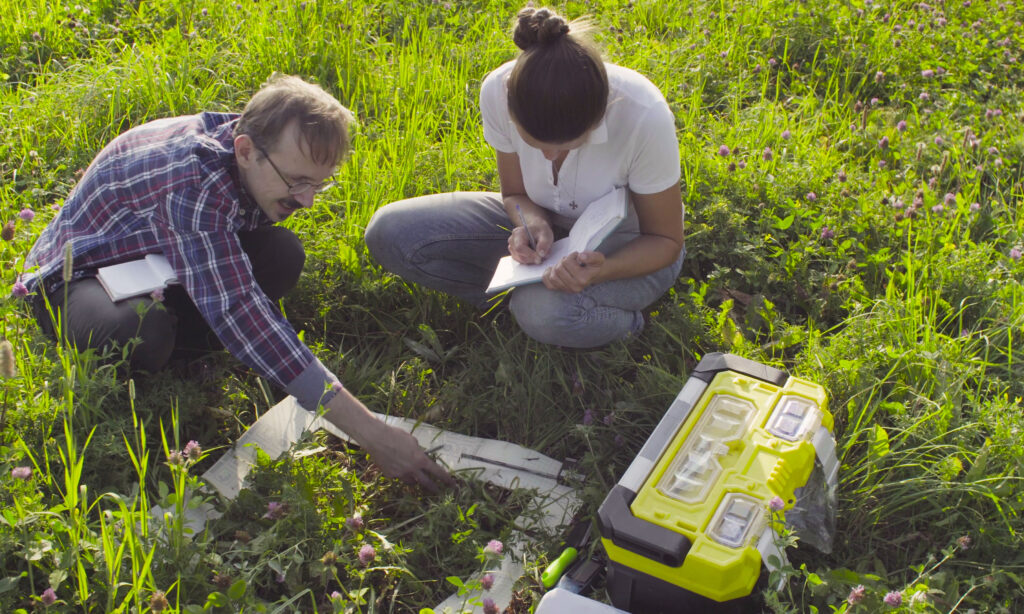Build Smarter and Greener: UK Biodiversity Net Gain
The UK Biodiversity Net Gain, a significant step towards sustainable development and conservation, is a pioneering initiative to enhance natural habitats and ecosystems in the United Kingdom.
This groundbreaking policy aims to ensure that new development projects result in an overall increase in biodiversity, leaving our environment in a better state than before. As concerns over climate change and biodiversity loss continue to grow, the Biodiversity Net Gain initiative presents a vital opportunity to address these pressing issues and transform how we plan and execute development projects.
Biodiversity Net Gain: Minimum of 10%
The Biodiversity Net Gain is set to come into force in 2023 as part of the UK government’s Environment Bill. This policy requires developers to demonstrate a measurable improvement in biodiversity after completing their projects. This increase typically quantified as a minimum 10% improvement, is achieved by incorporating habitat enhancements and ecological features into the design and layout of the project.
The Biodiversity Net Gain initiative is a vital component of the UK’s ongoing efforts to combat habitat loss, protect threatened species, and promote the restoration of ecosystems nationwide.
Developing and Benefiting: Contributing to Natures Recovery
This innovative approach to development goes beyond simply mitigating the negative impacts of construction projects on the environment. The Biodiversity Net Gain encourages developers to actively contribute to ecological restoration and enhancement, fostering a positive relationship between development and the natural world. By integrating biodiversity objectives into the planning process, developers can create spaces that minimize environmental harm and actively contribute to its recovery and improvement.

The Biodiversity Net Gain policy builds upon the principles of the widely-adopted mitigation hierarchy, which prioritizes avoiding and minimizing harm to the environment before considering compensation or offsetting measures. Developers are encouraged to avoid harm to biodiversity by careful site selection and design. When harm cannot be avoided, developers must minimize the impact through on-site measures, such as restoration or creation of new habitats. Offsetting measures, such as compensatory habitat creation or enhancement elsewhere, are considered a last resort when on-site measures are insufficient to achieve the desired net gain.
Tools for Implementation & Biodiversity Net Gain

The implementation of the Biodiversity Net Gain policy is supported by a range of tools and resources, such as the Defra Biodiversity Metric, which enables developers and planners to quantify the biodiversity value of a site before and after development. Based on habitat type, quality, and area, this metric provides a standardized method for measuring biodiversity changes and ensures a transparent, evidence-based approach to assessing the policy’s success.
As the Biodiversity Net Gain initiative comes into force, it will undoubtedly transform how development projects are planned and executed in the UK. This policy emphasizes the importance of preserving our natural environment and highlights the crucial role that developers and the construction industry play in achieving this goal. By fostering a collaborative approach to development and conservation, the UK Biodiversity Net Gain can serve as a model for other countries looking to balance the demands of growth and progress with the need to protect and enhance our precious ecosystems.
In conclusion, the UK Biodiversity Net Gain is a timely and essential policy that marks a significant shift in the approach to development and conservation. As it comes into force in 2023, it is poised to reshape the development landscape, encouraging greater harmony between human progress and environmental stewardship. The Biodiversity Net Gain initiative presents a unique opportunity for the UK to lead sustainable development, showcasing a brighter, greener future for future generations.
How Wildahome Can Help With Your Building Development Projects
As one of the Uk’s leading growers and suppliers of locally sourced wildflowers, seeds and mats, we can offer advice on sowing, growing and aftercare of wildflower areas within your project.
Creating space for nature within your project will enhance its ecological benefit and, done correctly, the project’s future financial gain.
At Wildahome, we offer solutions for all sizes and types of projects, from single dwellings to complete housing estates, from factory extensions to holiday parks.
Please feel free to contact us to discuss your project’s requirements.

Guidance for planning and developing your land while boosting biodiversity. We'll help you navigate regulations and find sustainable construction solutions that benefit your bottom line and the environment.
What is biodiversity net gain?
Biodiversity net gain is an approach that aims to leave the natural environment in a better state than before a construction project begins. It involves enhancing or creating habitats to compensate for any ecological losses caused by the development.
Why is biodiversity net gain important in construction projects?Biodiversity net gain helps mitigate construction’s environmental impacts by promoting the restoration and protection of ecosystems. It contributes to maintaining ecological balance, preserving wildlife habitats, and promoting sustainability.
How is biodiversity net gain measured or quantified?
Biodiversity net gain is typically measured by calculating the difference between the pre-development biodiversity value of a site and its post-development biodiversity value. This measurement considers habitat quality, species richness, and ecosystem services.
Are there legal requirements for net gain biodiversity in construction projects?
In some jurisdictions, some legal requirements or policies mandate net biodiversity gain as a condition for obtaining planning permission. These requirements vary depending on the region and specific regulations in place.
Can biodiversity net gain be achieved in urban or rural areas?
Biodiversity net gain can be achieved in urban and rural areas. Even in highly developed urban environments, opportunities exist to incorporate green spaces, rooftop gardens, or vertical greenery to enhance biodiversity and provide habitat for wildlife.
How can construction projects contribute to biodiversity net gain?Construction projects can contribute to biodiversity net gain by incorporating green roofs, wildlife-friendly landscaping, native plantings, bird boxes, or insect hotels. Additionally, protecting existing habitats during construction is crucial.
Is biodiversity net gain only relevant for large-scale construction projects?
Biodiversity net gain is relevant for projects of all sizes. While larger developments may have a more significant impact, smaller-scale projects can still contribute to biodiversity conservation by incorporating ecological enhancements and sustainable practices
What are the potential benefits of biodiversity net gain for developers?
Biodiversity net gain can provide multiple benefits for developers, including enhanced project sustainability, improved community relations, compliance with environmental regulations, and increased long-term asset value by creating attractive, biodiverse spaces.
Can financial incentives or grants be available for biodiversity net gain projects?
Some regions offer financial incentives or grants to encourage biodiversity net gain projects. These incentives can help offset the costs associated with ecological enhancements and make such projects more economically viable.
How can the success of biodiversity net gain be monitored and evaluated?
Monitoring and evaluating biodiversity net gain can be made through ecological surveys, long-term species monitoring, and measuring habitat quality indicators. These assessments help determine if the desired biodiversity outcomes are being achieved and guide any necessary adjustments.
Remember that specific regulations and practices may vary depending on the location, so it’s essential to consult local authorities and experts for accurate and up-to-date information.

